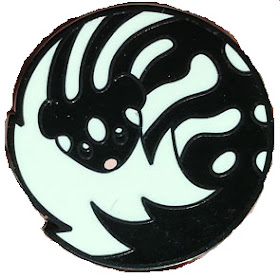This young female island fox was discovered during capturing of island foxes for counting and health checks with a broken rear leg. Her story is one of multiple agencies, institutions, and a community of people working together to help her survive.
Friends of the Island Fox and donors like you helped raise the $1,900 to pay for her specialized orthopedic surgery. Following her orthopedic evaluation on March 15, Julie Barnes, V.P. of Animal Care and Health at the Santa Barbara Zoo, reported that "the fracture is healing really well and no longer needs bandaging."
March 28th and she is standing solidly on all four legs!
All island foxes are under the jurisdiction of the California Dept. of Fish & Wildlife (CDFW). Removing an individual from its island habitat is a major decision because once an island fox comes off of its island of origin, it can not be
returned. Because island foxes evolved in isolation on the Channel Islands, they are very susceptible to diseases from the mainland. Canine distemper virus is lethal to them and nearly caused extinction on Catalina Island in 1998. Today, a minimum of 100 island foxes are vaccinated against distemper on each island annually. (Help FIF vaccinate foxes)
To protect the wild population, the injured female island fox can not return to San Nicholas Island. The CDFW has approved The Living Desert Zoo and Gardens in Palm Springs as her new home. The Living Desert is an American Zoo Association accredited zoo and has cared for other island foxes in the past. She will be moving to her new home March 30th.
Currently, there are six (Update 5/23/24 - five) island foxes living in zoos on the mainland. The CDFW requires that each facility only have males or females, since no island foxes can be bred on the mainland for release on the islands.
If you can't travel to the Channel Islands, you can see island foxes at:
The Santa Barbara Zoo
Brothers, Lewis and Clark, were left abandoned pups after their mother was hit by a car on San Clemente Island. The Santa Barbara Zoo leads the zoo community's efforts toward island foxes and hosts the annual Island Fox Conservation Working Group Meeting. (Update: Clark passed away at 8 years old on May 17, 2024, Lewis remains healthy and on exhibit.)
California Living Museum, Bakersfield
Two sisters, from San Clemente Island, were abandoned by their parents as pups during a drought year. They were in an enclosure with a female gray fox. The only place where you can see these two species side-by-side. (Update: one sister passed away in 2023.)
The San Diego Zoo Safari Park
Is home to Sage, a female island fox from Catalina Island, who was separated from her parents by people as a pup, resulting in chronic health issues. She was unable to be released back into the wild and requires regular veterinary care.
 |
The little San Nicolas Island fox joins her five cousins as ambassadors for their wild relatives. They tell a story of how human actions can be detrimental or positive for island foxes.
The San Nicolas Island fox has a second chance because people like you came to her aid.
























